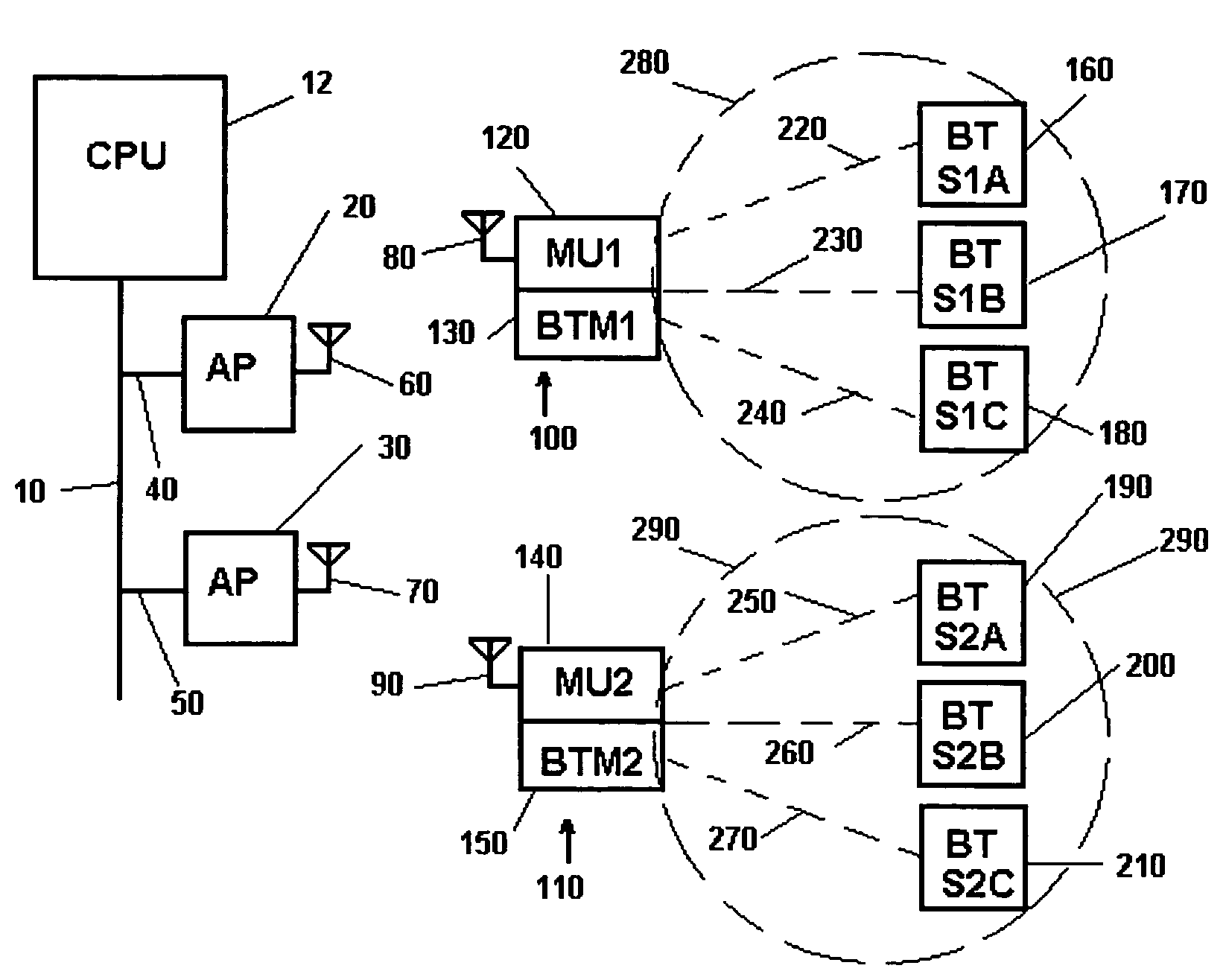Coexistence techniques in wireless networks
a wireless network and coexistence technology, applied in the field of wireless data communication networks, can solve the problems of no method of coordination for the use of these wireless devices in the same frequency operating under different communication protocols, difficult to coordinate voice transmission using bluetooth sco packets with 802.11 communications, and random waiting of each devi
- Summary
- Abstract
- Description
- Claims
- Application Information
AI Technical Summary
Benefits of technology
Problems solved by technology
Method used
Image
Examples
Embodiment Construction
[0033]Turning to FIG. 1, shown are a plurality of base stations or Access Points (APs) 20, 30 that are physically connected 40, 50 to a wired network 10. While a wired network with multiple access points connected to a CPU 12 is a typical installation, the system may use a single computer and single AP. Each AP contains apparatus 60, 70 for the transmission and reception of radio frequency (RF) signals under the 802.11 protocol. Also using the 802.11 protocol, a plurality of radio transceivers or mobile units (MUs) 120, 140 communicate using apparatus 80, 90 for the transmission and reception of RF signals. Each MU 120, 140 may also be associated with a radio transceiver which is a Bluetooth Master (BTM) device 130, 150, which together make up a dual mode devices 100, 110. The association between the MU and BTM may be, for example, by way of being physically housed in the same unit. An example of a dual mode device 100, 110 may be portable terminal worn on a belt.
[0034]Each BTM 130,...
PUM
 Login to View More
Login to View More Abstract
Description
Claims
Application Information
 Login to View More
Login to View More - R&D
- Intellectual Property
- Life Sciences
- Materials
- Tech Scout
- Unparalleled Data Quality
- Higher Quality Content
- 60% Fewer Hallucinations
Browse by: Latest US Patents, China's latest patents, Technical Efficacy Thesaurus, Application Domain, Technology Topic, Popular Technical Reports.
© 2025 PatSnap. All rights reserved.Legal|Privacy policy|Modern Slavery Act Transparency Statement|Sitemap|About US| Contact US: help@patsnap.com



